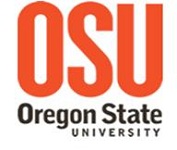- Dr. Stacey Harper received a five-year, $3.3 million award from the National Science Foundation to study the risks of micro- and nanoplastics to aquatic organisms in the pacific northwest.
- Dr. Stacey Harper received a five-year, $1.9 million award as an Outstanding New Environmental Scientist (ONES) from the National Institute of Environmental Health Sciences (NIEHS) and was selected as 2013 recipient of the L.L. Stewart Faculty Scholars Award which recognizes an outstanding faculty members at Oregon State University.
You are here
Internalization, reduced growth, and behavioral effects following exposure to micro and nano tire particles in two estuarine indicator species.
| Title | Internalization, reduced growth, and behavioral effects following exposure to micro and nano tire particles in two estuarine indicator species. |
| Publication Type | Journal Article |
| Year of Publication | 2022 |
| Authors | Siddiqui S, Dickens JM, Cunningham BE, Hutton SJ, Pedersen EI, Harper B, Harper S, Brander SM |
| Journal | Chemosphere |
| Volume | 296 |
| Pagination | 133934 |
| Date Published | 2022 Jun |
| ISSN | 1879-1298 |
| Keywords | Animals, Crustacea, Ecosystem, Fishes, Water Pollutants, Chemical |
| Abstract | Synthetic rubber emissions from automobile tires are common in aquatic ecosystems. To assess potential impacts on exposed organisms, early life stages of the estuarine indicator species Inland Silverside (Menidia beryllina) and mysid shrimp (Americamysis bahia) were exposed to three tire particle (TP) concentrations at micro and nano size fractions (0.0038, 0.0378 and 3.778 mg/L in mass concentrations for micro size particles), and separately to leachate, across a 5-25 PSU salinity gradient. Following exposure, M. beryllina and A. bahia had significantly altered swimming behaviors, such as increased freezing, changes in positioning, and total distance moved, which could lead to an increased risk of predation and foraging challenges in the wild. Growth for both A. bahia and M. beryllina was reduced in a concentration-dependent manner when exposed to micro-TP, whereas M. beryllina also demonstrated reduced growth when exposed to nano-TP (except lowest concentration). TP internalization was dependent on the exposure salinity in both taxa. The presence of adverse effects in M. beryllina and A. bahia indicate that even at current environmental levels of tire-related pollution, which are expected to continue to increase, aquatic ecosystems may be experiencing negative impacts. |
| DOI | 10.1016/j.chemosphere.2022.133934 |
| Alternate Journal | Chemosphere |
| PubMed ID | 35176295 |
| PubMed Central ID | PMC9071364 |
| Grant List | T32 ES007060 / ES / NIEHS NIH HHS / United States |
Theme by Danetsoft and Danang Probo Sayekti inspired by Maksimer
